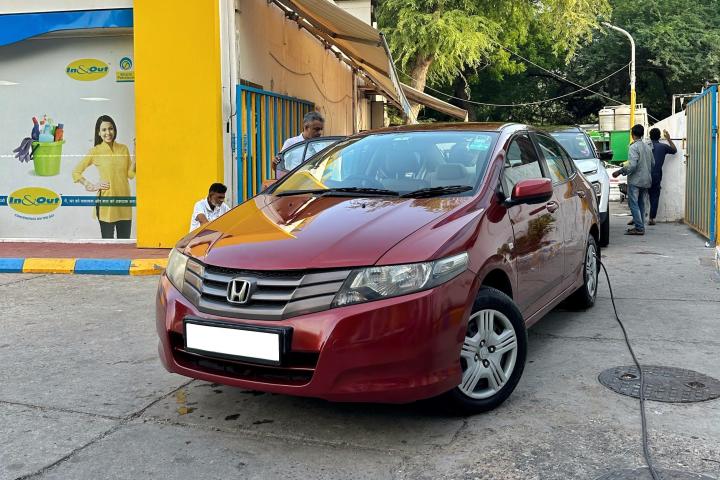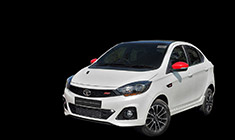News
13 years with my Honda City i-VTEC: Why I think its a gem of a car
In a world that follows trends and enjoys consumerism, my humble submission is that some people should take it upon themselves to hold on to the cars of their years.
BHPian brohanv recently shared this with other enthusiasts.
Why I think the GM3 Honda City is an absolute gem
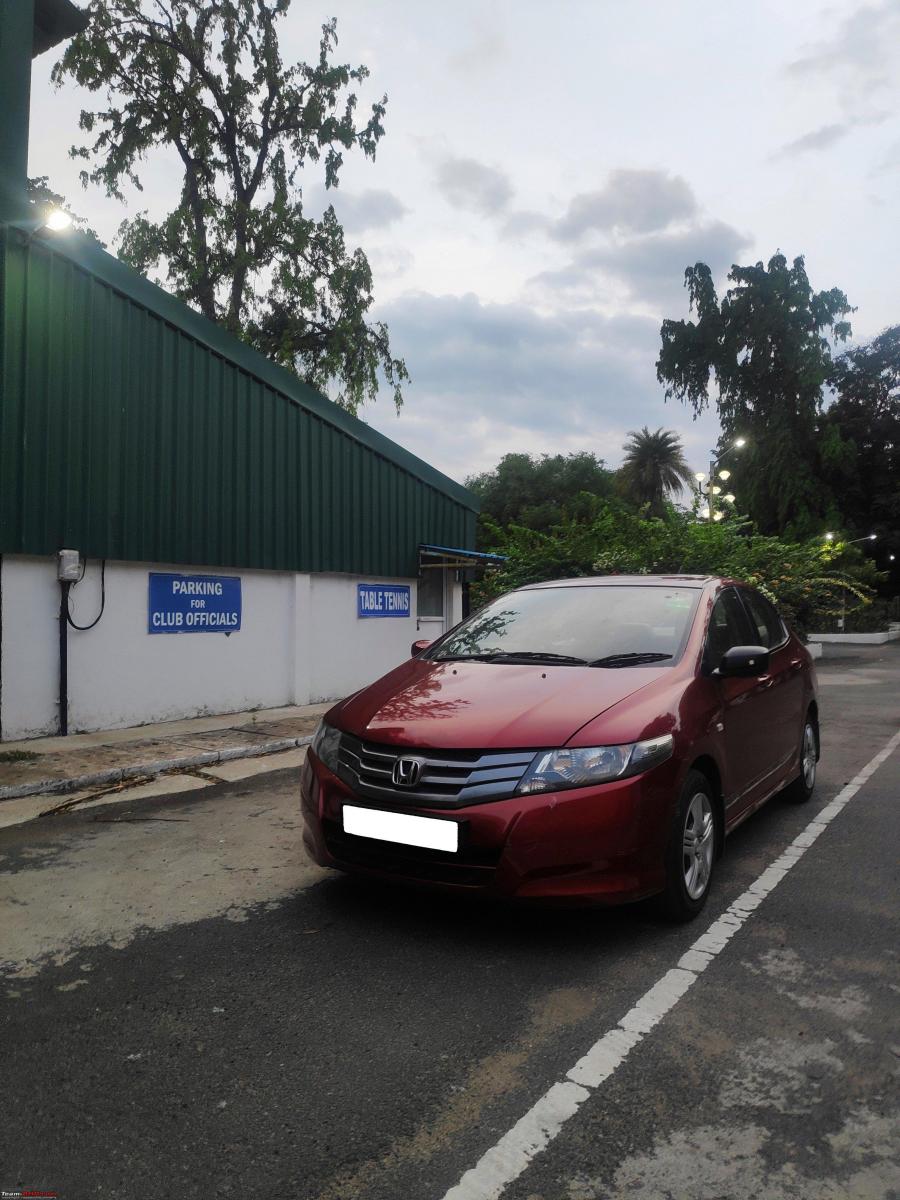
Circa 2020, Chennai
At the outset, I feel it is imperative to address my biggest apprehension in penning down this review, reminisce, love letter or whatever this turns out to be; primarily that, this is an obsolete effort at writing a review of an arguably obsolete automobile. I mean, what does one say about one of the best-selling cars in India, one that shaped middle-class aspiration like few others; the Kia Seltos of the early 2010s, albeit more fun to drive and soulful, that hasn’t already been said? Secondly, even if someone does err in having their attention grabbed by a random twenty-something-year-old in a quest to live out an auto journalist fantasy to cope with Monday morning blues, is there anything new to be said? We’ve all heard the same tale told and retold to the point of monotony and eventually to the point of it assuming the role of a nostalgia-inducing lyrical of the years gone by, the natural aspirated free-revving engine, in the case of the Type-2 Vtec Honda City, the g16B in the OG baleno, and the k24 in the Honda Accord, among others, being the heroes of these tales. Obviously, with time, forced induction in engines was a wind that was inevitably going to sweep the auto industry, either by appealing to the head with better fuel economy and tax benefits due to smaller capacity motors and better pollution law compliance or by brute force. I mean, if you had 3.5 lakhs to spare, with a couple of lakhs for upkeep, would you pick up a 1.8 turbo-petrol in the Laura or a 1.8 naturally aspirated in the Civic? The larger majority is likely to pick the former. Face it, the double whammy of better fuel economy and better power figures does more than just offset the inability to high-rev the nuts off your engine. The auto industry reacted promptly and in spades, ushering in the age of small turbocharged engines and changing the face of the Indian car scene in less than a decade. Gone are the Palios, the Fiesta 1.6s, and the ladder-on-frame people movers that were more like trucks than cars (they seem to be making a comeback now, though). As much as we speak in our ineffable enthusiast lingo about hard-to-grasp abstractions like soul, character, etc., a feature-loaded vehicle the likes of the Seltos or Kushaq, delivering better fuel economy, more “badi gaadi” feel amongst other things is what most of us would put our money on. And is that such a bad thing? I mean, a 1.4 TGDI Seltos would leave my City biting its dust on the expressway like nobody’s business.

After a recent wash and wax job
The truth is, we were responsible for this. We, car buyers as a larger collective preferred turbo-diesels that offered better low and mid-range performance sans much top-end performance, as in our national engine, the 1.3 multijet from Fiat. And my submission is that this point of distinction is not necessarily a bad thing. The more fierce the competition, the harder marques will try to set themselves apart, and if Mahindra can go from being a crude people-mover maker for rural India to a sophisticated lifestyle-vehicle maker, then the future is not all bleak. Even Force made a valiant effort at pulling a Mahindra with their Gurkha.
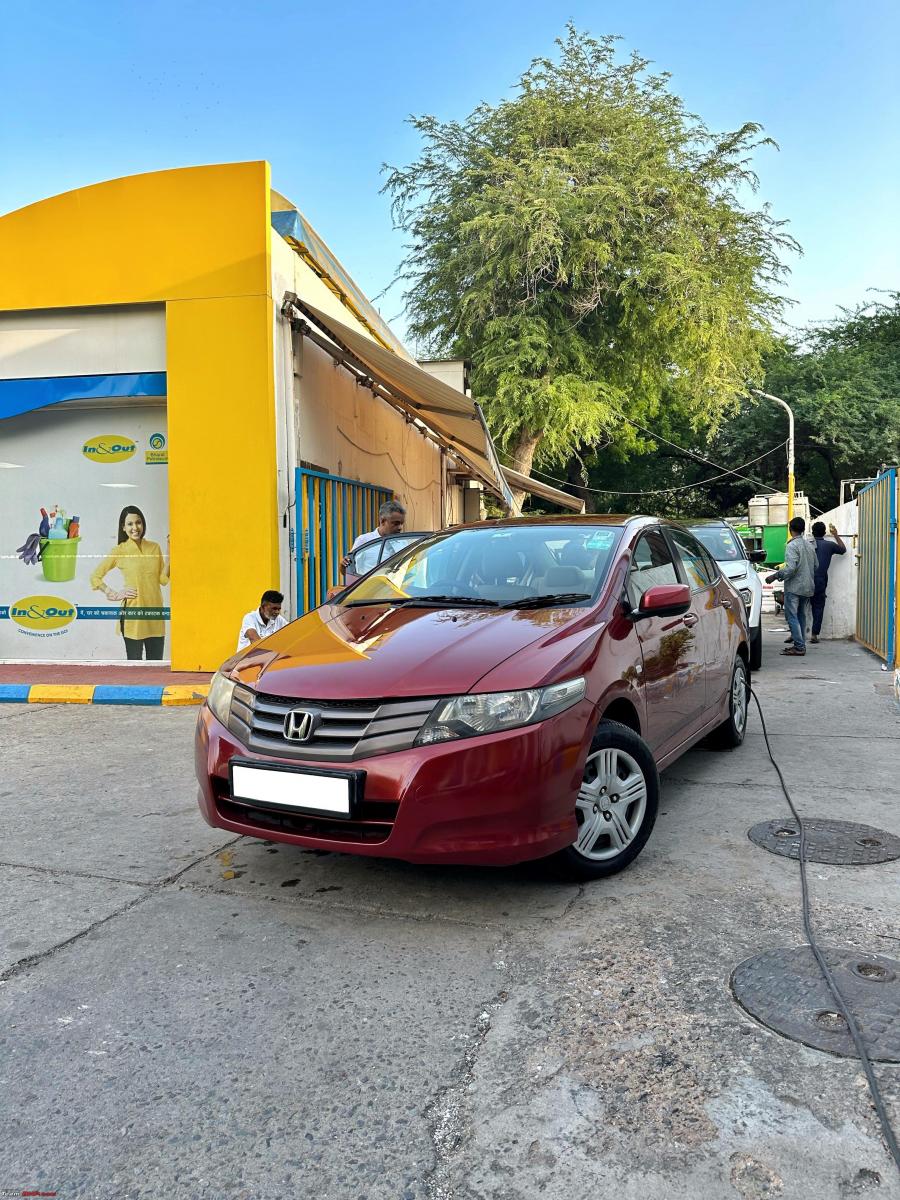
IMO, the best profile of the car
The truth also is, while dreams and aspirations we must have (I mean, we’re car guys, how else do you obsess over something like a Lancia Delta Integrale given that most of us will never even have the privilege to behold one), the more pragmatic of our priorities in life take over, and this is why I feel that while niche vehicles will continue to exist right alongside cars that serve the primary purpose of carrying our keisters from A to B; cars that could both carry your family and make you smile ear to ear when you finally had the opportunity, to rev-match, downshift, and floor the throttle, however, are a concept relegated to the yesteryears. And I know Lamborghini makes the Urus, Mercedes, the E-class AMG, etc. but they’re not entirely what the large majority of us would deem accessible, and my point here also revolves around fun that is accessible. The common factor amongst all the cars that were considered cars for the enthusiasts in our automotive scene’s nascent years, was the combination of simplicity and fun. I’m not saying that older cars made power accessible to everyone but all the discernible sensations of driving could be experienced. Steerings were hydraulically assisted, kerb weights were low and engines revved freely. Simplicity was of the essence to make these cars marketable to the world at large. So for the enthusiast on a budget, fun behind the wheel was accessible. Only a handful of us end up having the opportunity to experience the vehicles we grew up dreaming about, and even smaller minorities have the pleasure of calling them our own. The truth is that many of us will never end up owning the cars that adorned our bedroom walls as we grew up. Let me ask you this; what brought you closer to the realization of your auto-related aspirations? Was it owning that poster of a Hyuara, a Diablo or an F430 that kept the dreams of someday owning one alive? Or was it a brand new Opel Astra, a Tata Sierra, or a Safari (depending on when you were born), parked in your dubiously affluent uncle’s driveway that you would rather pick? Also, is it the pursuit of the latest, fastest and baddest that characterizes your love for wheels or is it something else?
Penned this review about a year before I went for a trip to Italy, and as luck would have it, lo & behold
I feel, despite everything that has been said and done, despite the raving reviews and thumping sales, this is, in my humble opinion, an underrated car. These are cars that you just can’t ignore when you step out, they are everywhere. And one of the fallacies of the mind is that it unwittingly confuses commonplace and every day with boring. My point is, that I have never, in all the time that I have spent driving this car, had an instance where redlining it didn’t bring unmatched gratification. When you use the same car for airport runs, hauling groceries, etc, how do you not associate it with the mundanity of everyday chores? This is a car that belongs to a dwindling breed that recalibrates your beliefs around it when that weekend drive does arrive. And not in the “badi gaadi” way either. If the GC is too low for trips to the Himalayas, and the brakes are too poor beyond 120km/h for most people’s ideas of high-speed driving, amongst other things. Why is it then that I continue to have great fun in it? The answer is what follows the rapid climb in revs beyond 4000 rpm that makes you feel like you’re behind the wheel of something special. It lacks in several areas and a 13-year-old car simply cannot offer the convenience of a newer car, but the thing with this car is that it has an uncanny ability to continually grow on you. It has gone from looking like the best thing to have ever graced a Rural UP road to now a simple people mover and yet it still feels remarkable to me.
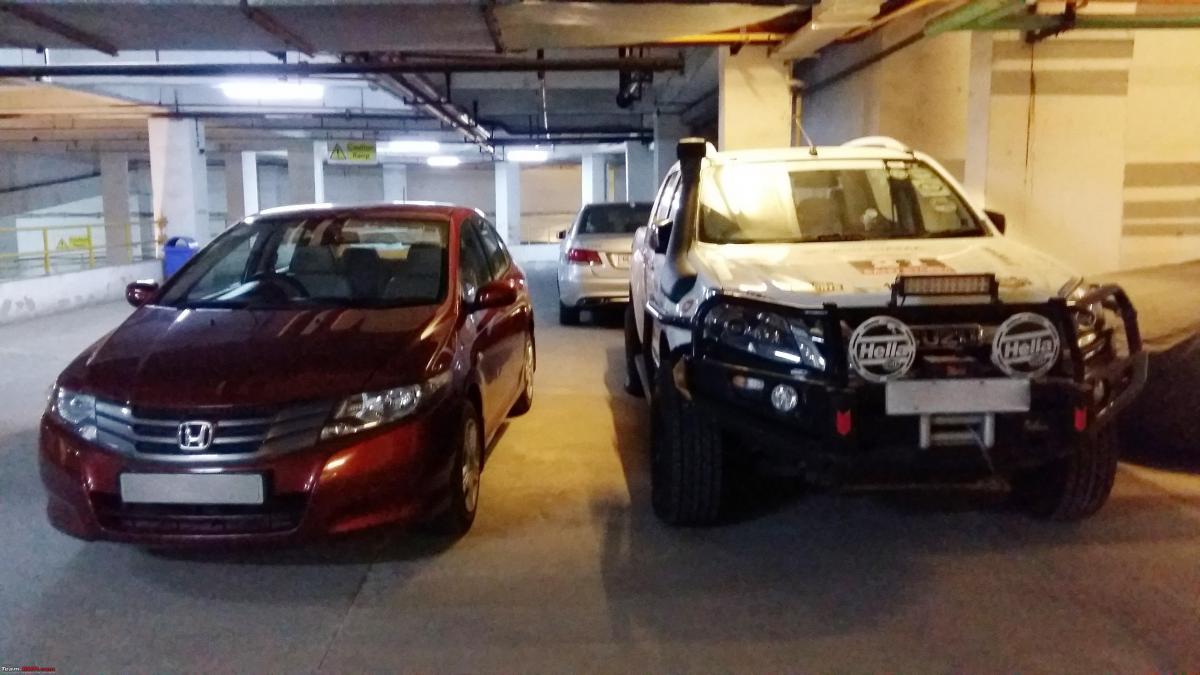
One charming jap juxtaposed with another
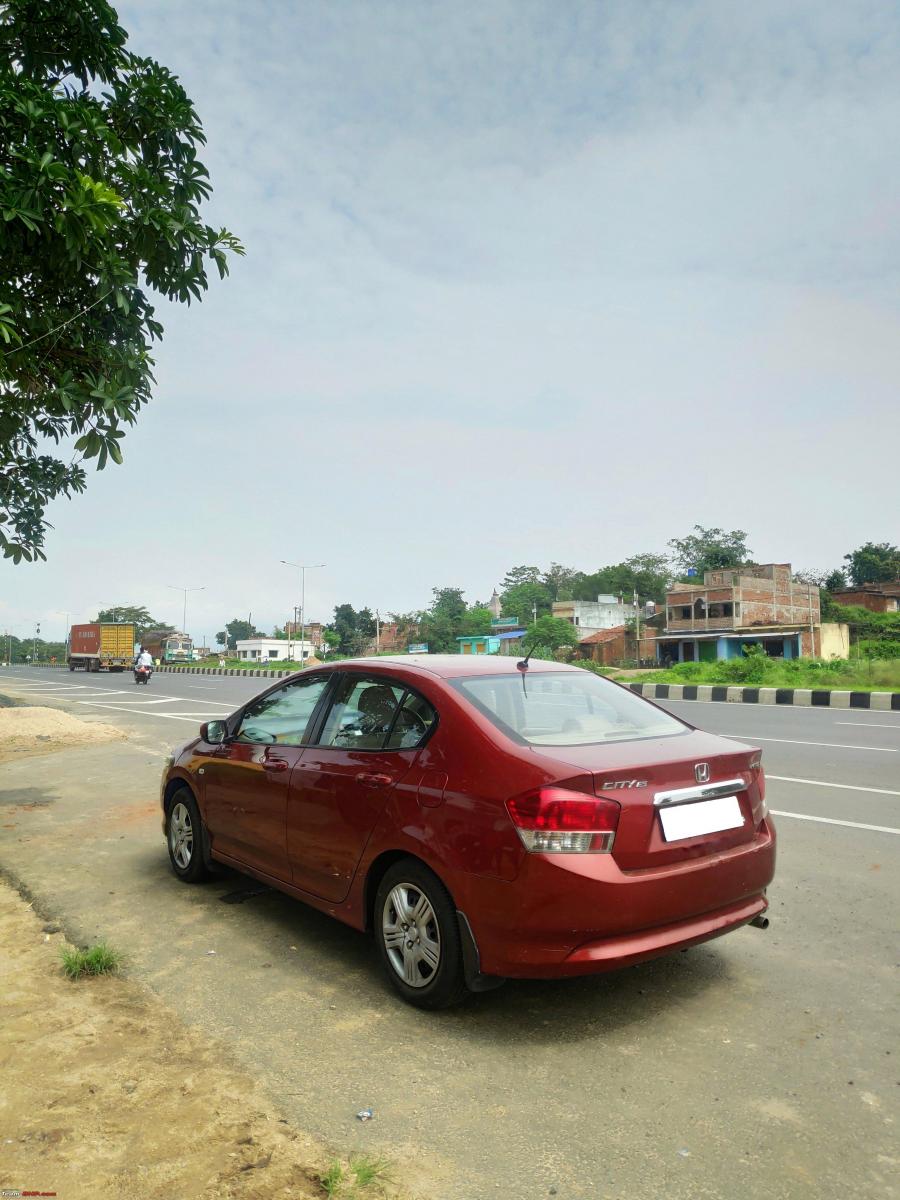
Somewhere in rural Bihar while traversing from Kolkata to Delhi
There are some erudite reviews of this car on this very forum by fellow-bhp-ian(s) that you should look at instead if a sense of objectivity is what you’re after since an attempt at trying to reproduce the same information with a similar degree of objectivity will be futile, especially since this car represents my starting point with cars. It will always be the baseline of my expectations due to my years of memories with the car. Redlining it, sneaking it out of the house to take friends out on drives, can’t be put into words with any real efficacy anyway
Yet, as one does with most irreconcilable desires, I will attempt regardless and share my perspective.
What I like:
- The intoxicating pull of the engine post-3500rpm, unbridled by turbo lag, is just a raw and mechanical feeling of power.
- 118bhp in a car that weighs about 1200 kilos yields a decent power-to-weight ratio.
- Direct, predictable, and consistent steering. It is on the heavier side relative to newer electric power steering units. But what it lacks in feedback, it makes up for in responsiveness and directness. It also weighs up well on the highway.
- The responsive chassis is full of feedback and has more potential than the car’s powertrain and soft suspension can exploit.
- As far as the low driving position is concerned, the advantage of the low-slung seats is the ability to feel which way the bottom of the car is pulling.
- The gearshift is super smooth, and the clutch travel is concise. It makes for a refreshingly rewarding experience of shifting as the revs climb in a world moving towards IMTs and ATs.
- The pedal feel is progressive and the braking power is adequate, although the braking could be better in certain regards, more on this later.
- The front end is very responsive since the low center of gravity is at play. The steering is tuned a bit lazily around the dead-center position, but beyond that, the car moves at your behest promptly.
- Stability up to about 150 kph is satisfactory once the undersized factory rubber is binned. Braking, on the other hand, would not keep up.
- The exhaust note when you climb through the revs, simply put, is unparalleled by any small turbo petrol sold for similar prices today.
- The rev-happy engine is capable of hitting a ton in second gear. It’s a great feeling when you’re relishing the symphony at 7000 rpm.
- Durability, niggles with the interior have come up after 13 years of usage, but apart from the ubiquitous steering rack knocking issue common to all examples of this car, it has been an exceptionally reliable car and has never left us stranded in close to all of its years. For instance, the first clutch lasted 13 years!
- Back in 2010, no car proclaimed you had arrived in life like a Honda City amongst middle-class Indians.
- It's a gorgeous thing to look at, I think the pre-facelift looked distinctly Japanese inside and out, with the orange glow of the interior trim and the clean lines. With some fat rims and tyres and lowered suspension, it would sit squat and pretty.
- I have driven >1000 km while on a road trip from Kolkata to Delhi in a single day, and then an 11-year-old car that has seen a fair amount of abuse did not skip a beat for more than 15 hours of driving whilst also not inordinately tiring its occupants out at all and did it all over again the next day!
- Reliability. My former FNG garage owner, who drives a Type-2 Honda City donning a Senna T-shirt, famously says that you’d have to be a moron of some proportion to ruin a Honda engine.
- The Cavernous 506-litre boot deserves a mention.
What I can live with:
- The car nose-dives under braking. A spoilsport when you’re enjoying the redline and trying to shed off speed. The brakes do their job. 9 times out of 10, it will hold its line under heavy braking, but still, the rear drum setup is inadequate for fast driving. Sedate drivers would not complain, though. The shift in CG also means that the rear end comes somewhat unglued, not a confidence-inspiring feeling.
- The factory tyres were 175-section tyres. Contributing to good fuel economy, and putting down a 130 NM of torque in a tall-geared vehicle was never a problem. But, they weren't suitable for highway cruising. In short, for city use, the bean counter benefits outweigh the purist downsides.
- A list of hallmark Honda City problems and inconveniences includes windows that roll up at a glacial pace after a few years of use; the Takata airbags that could shoot shrapnel at your face before the recall; weak headlamps, steering rack issues, meek sounding horns, etc.
- The air conditioner is inadequate for hot summer afternoons in our climate. It’s not that the AC’s not powerful enough, it is. With just regular servicing, in its 13th year, the AC is still adequate on most days. But with the plentiful glass area, and the lack of UV-cut film, the AC can’t keep up during a hot summer day.
- With the lack of features, even by 2009 standards, the cabin is fairly basic. I can summarise the list of features to ABS, AC, 4 speakers, engine immobilizer, electronically adjustable orvms, and 2 airbags.
- The small fuel tank is somewhere around 35 liters, the fuel economy on the open road is 15 km/l at best, and the range proves to be inadequate. In the city, it is about 10-12 km/l. However, it plummets when driven with a heavy foot to under 10 km/l.
- The ingress and egress are not elderly-friendly.
- The difference between gear ratios in the 4th and 5th gears is very little relative to other cars, and it should have either gotten a taller 5th gear or an added 6th gear.
What I don’t like:
- The rear suspension proves to be the fly in the ointment as it bottoms out at minor undulations under a load of even two desi-proportioned people if taken at anything above 65 km/h. It also needed replacement at 75,000km, which is less than some of our other cars through the years.
- For the above-mentioned reason, the ground clearance will make your butt clench at even smaller speed breakers because where the underbelly doesn’t scrape, the unscientific mudguards invariably will. You will have to take speed breakers at an angle when under full load and yet still have to deal with the consequent exchange of facial expressions upon scraping the underbelly.
- In typical mass-produced Japanese economy car fashion, the doors are light. But shut lines and the durability of the car’s interior and exterior panels are testaments to the quality. If you’re used to something German, this car will never inspire your confidence as far as a perceived sense of safety is concerned. Having said that, Honda offerings at the time, i.e. the Accord, Civic, and CRV, felt much better built and had fewer apparent cost-cutting measures than Hondas of today.
- After the discontinuation, the 6-month period was reduced to 3 months by Arya Honda in Mumbai, I was another victim of this. It seemed like a money-making scheme. Annual service costs were in the range of 20,000-30,000 until we stopped this practice. Found good FNG(s) wherever we went since and the Engine Oil is changed every 6000-8000 km due to low running. It's been reasonably economical to maintain since.
- I can’t even remember how many times the horn and the headlight bulbs have been replaced since the time we brought her home.

Uncle Dear with his discerning eye for detail making sure the Cowl is bolted in properly post-cleaning
The part that’s not incessant, unsolicited opinions?
The engine is the star of the show, it doesn’t shove you in your seat since there is never a sharp spike in power delivery across the rev range. But the linear rise in revs as the exhaust starts to sound throatier will delight the driver in you. The rev-limiter cuts off the fuel supply sharply and doesn’t allow throttle input until it drops down to lower rpms when you push too far. The steering is well calibrated, heavier than EPS(s) in new cars but not cumbersome still. It doesn’t have the feedback you may expect from an otherwise rewarding experience, but it is predictable and the linearity of how much the wheel turns based on degrees of steering input is reassuring. It does have a proclivity to understeer if thrown into a bend with aggression, but it duly communicates its inability to carry your expected pace in advance. So there are no dirty surprises when driving spiritedly. It’s also very easy to drive, the dimensions are short by today’s standards and it never feels unwieldy. Controls are light and ergonomically the vehicle is s-o-r-t-e-d, so everything falls at hand intuitively. The NVH is far from exceptional, tyre noise is fairly audible in the cabin and the windows feel thinner than the Corolla Altis letting in ambient sounds. (perhaps, an unfair comparison, but my next best standard, regardless)

Parked next to her stable mate, two similar jap sedans that drive nothing like each other.
Another area where the car leaves an impression is its looks, it carries a mix of curves and some aggressive straight lines that are uninterrupted from one end of the car to the other. This is an example of a design that is diametrically opposed to a Gen 2 Hyundai Creta, for instance (A vehicle that also commands a sweet niche in the market, perhaps also comparable in sales price after adjustment for inflation), in terms of the sheer number of design elements. I believe this car belongs to that era where automotive companies were nailing the judgment between restraint and excess in car design. But this is very subjective and a matter of personal preference.

Circa 2018, Mumbai

After a post-monsoon detailing session.
She recently went for a mid-life makeover at an FNG that turned out not so friendly, but then again, such is life. On the mechanical front, the gearbox fluid has been replaced, a new clutch with clutch release bearing has been put in, the lower suspension arms are new, and the brake system has been bled and new oil has been put in. The rear suspension has been replaced and the front suspension was replaced only 20,000 km. ago. About half the car’s panels had scratches on them and have been painted over, the clear coat has been fixed across the vehicle and new leather upholstery has been installed. However, just as a word of caution, I would steer clear of Classic Auto in Noida, sure they may be good at their mainstay (I wouldn’t know), putting brand new upgrade components on off-roaders which is a simple task comprising of taking off a few nuts and bolts and putting in a replacement, but for all the messy tasks where the elbow grease to monies ratio doesn’t sit kindly with them, expect cut corners and sales tactic that behoove a Karol Bagh salesman more than it does a large, professional-seeming concern. It has also been a pain to find a garage for my car in Delhi-NCR after having been used to the professional standard of work at Alok Automobiles in Kolkata, most that I’ve been to, thus far, feel like they’re built with a get rich quick mindset.
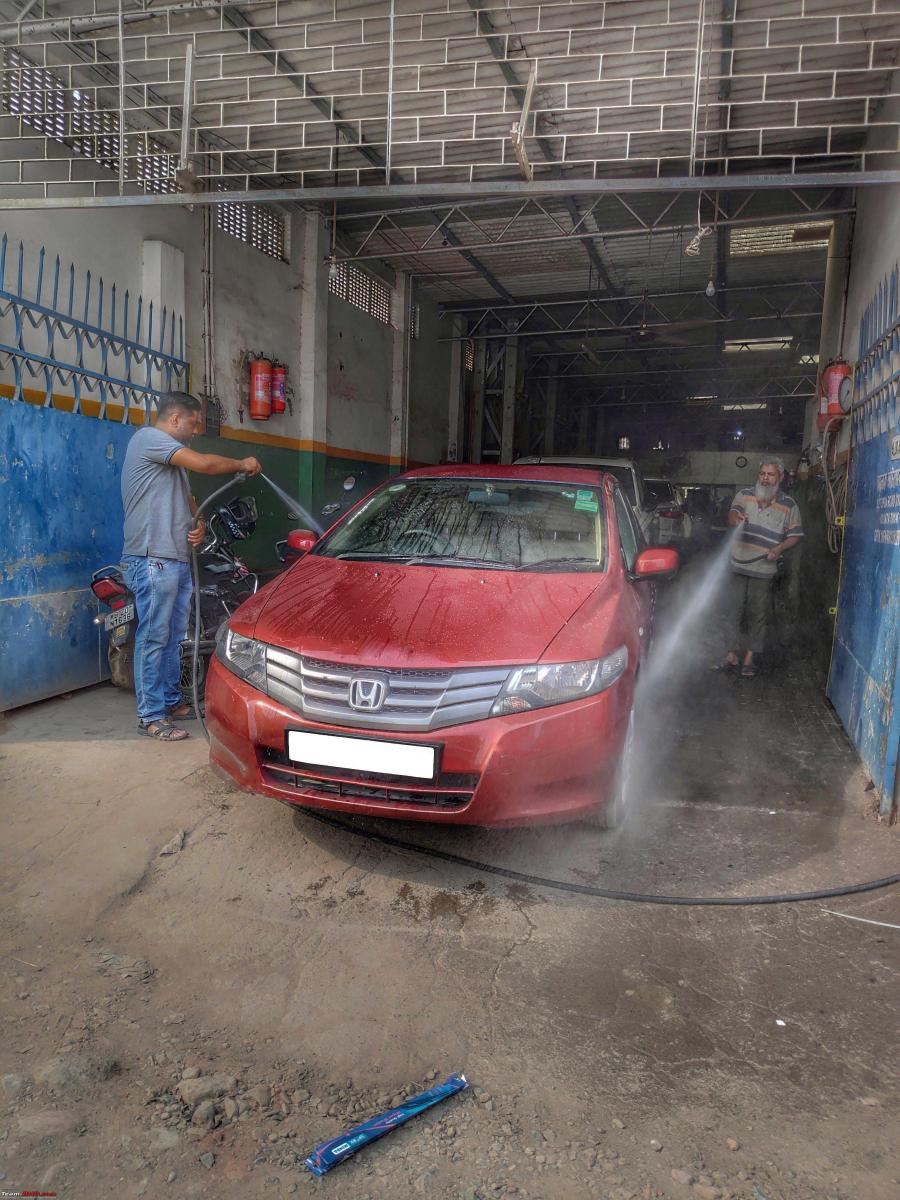
Suman da with no qualms about getting his hands dirty washing the car post service.
The 1.5 liter SOHC 16 valve i-VTEC heart of the matter.
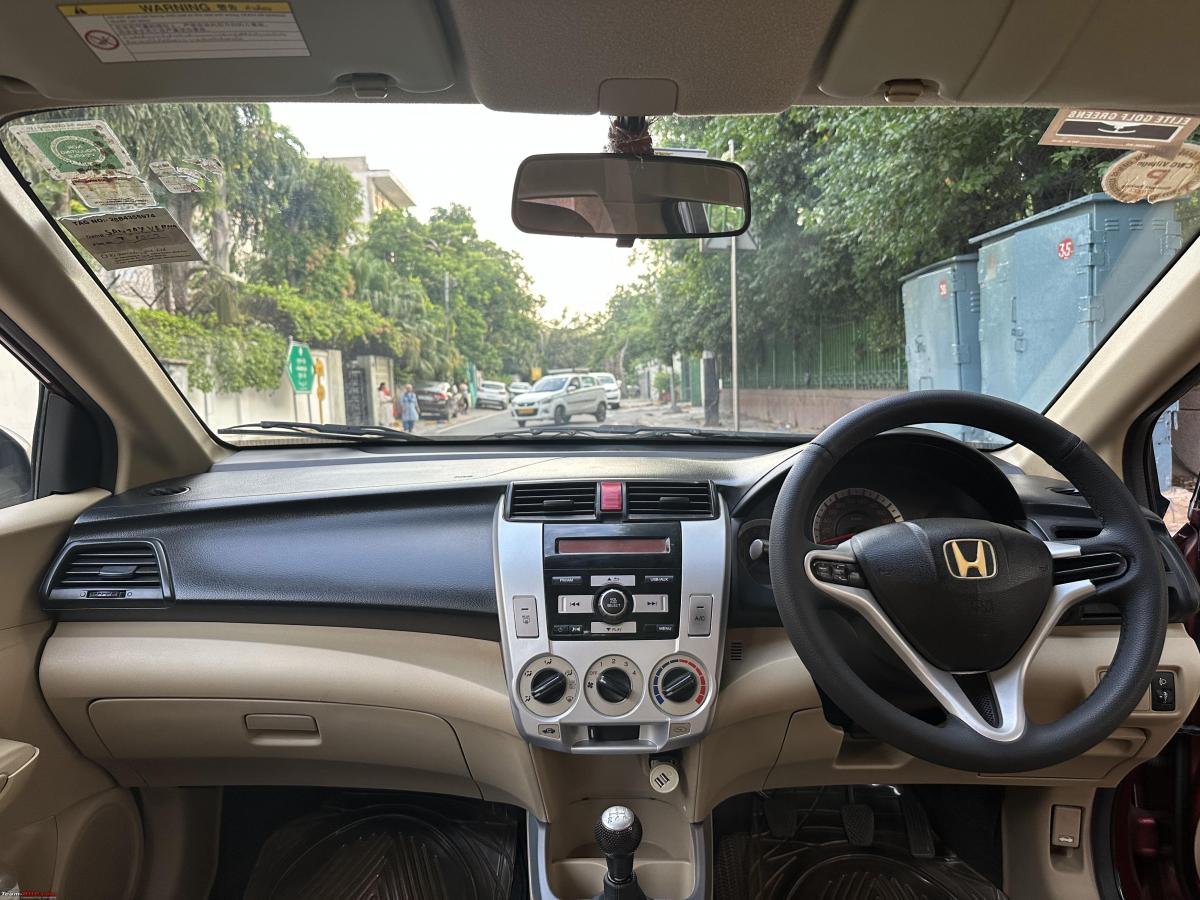
Note the steering trim piece that broke in the process of tucking in the leather, of course, the garage of course could do no wrong, however.
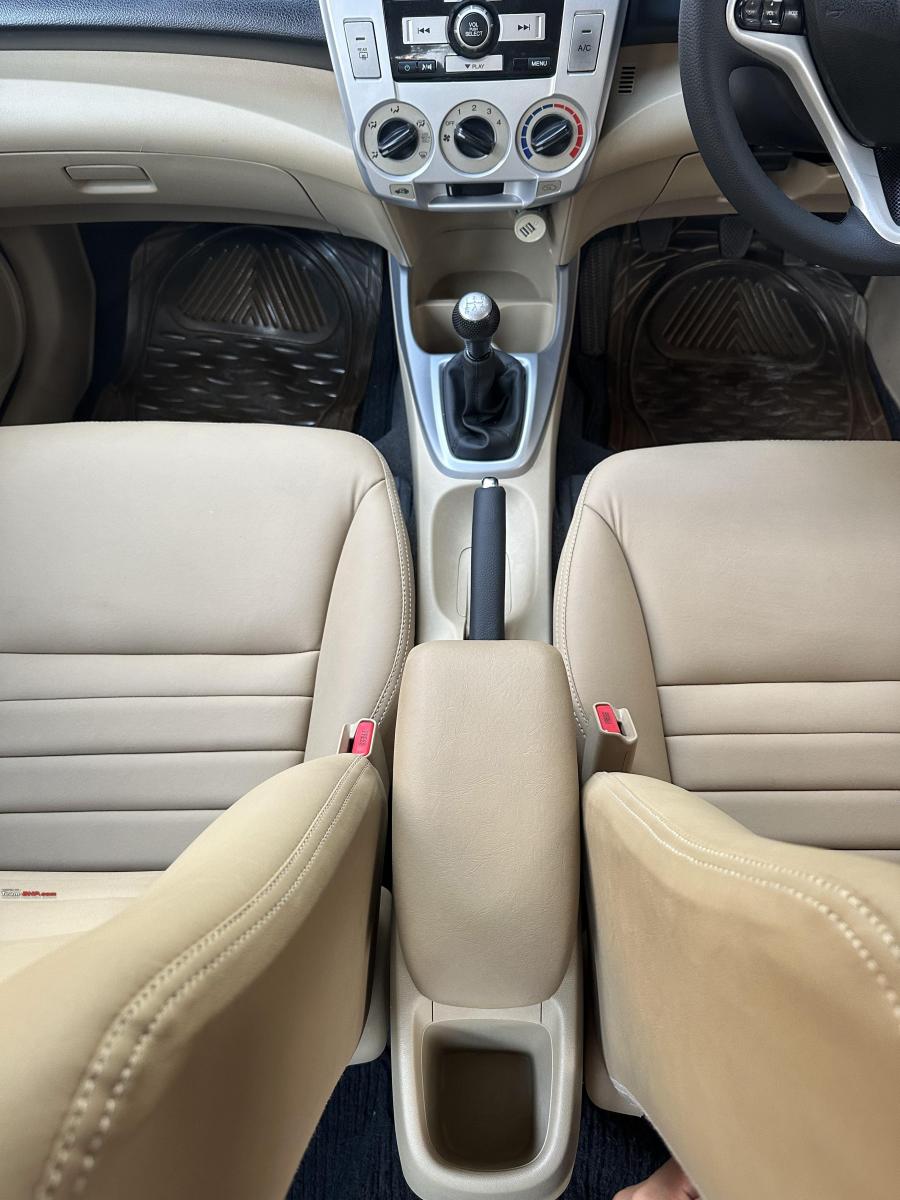
The handbrake too has been shrouded in leather as the plastic had come clean off at the end.


Conclusion
My experience with the car hasn’t just been pleasant just because of its ability to feel fast. It has been a car that has stuck through stints across the country all while accommodating a family through all its errands, highway runs, school and office commutes. This may not be an impressive number to the cross-country drivers here, but the car has been stationed in Chennai, Mumbai, Lucknow, Delhi, and Kolkata through the years and not all of them offer similar road conditions. The fact that it wasn’t trips but rather operating in and out of different roads, weather, humidity, and traffic conditions with inviolable reliability is what impresses me. It is also the second car I ever drove after learning in a Mahindra Bolero. It has taken me to half marathons, training, and internships at different offices. It became a part of my day, a reliable friend that would never falter. When there was uncertainty in other areas of life, this one could always be counted on
And that’s not something that shorter ownership periods can ever offer. Considering everything though the car has been a pleasure to own and maintain. For folks contemplating retaining their older cars, I implore you to pay heed to that thought. The way the relevant policy seems to be shaping up, we might end up with an entire generation of cars wiped out like the Contessa, Corsas, Daewoos, and Mondeo already have. Some people must retain the cars of their years. Car culture seems to value certain niches more than others; Exotics, German Yountimers, and Beetles will find their homes, but the Safari Dicor Petrol and the Chevrolet Forester may just perish, for instance. Of course, whether every car is worth saving is a whole different conversation. (I’d say, yes!)
Between the environmental impact of large-scale factory production of new automobiles and the fact that a 2.2 BS6 diesel engine will always emit more Nitrogen Dioxide than a 1.5 BS4 petrol engine, it also objectively makes sense considering the environmental footprint involved. Don’t even get me started on EV(s) with lithium-ion batteries that do less for the environment than I would care to elaborate upon.
In a world that follows trends and enjoys consumerism, my humble submission is that some people should take it upon themselves to hold on to the cars of their years. As you may have guessed, I have no intention of ever letting go of this car, from here to infinity.
Read BHPian comments for more insights and information.



